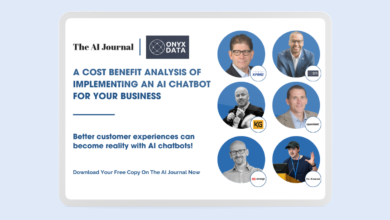
Ask ChatGPT how AI could transform the way businesses approach customer interaction and services and here’s what it will tell you:
“By automating routine tasks and providing quick, accurate responses to customer inquiries, AI is improving the efficiency and effectiveness of customer service. By analysing customer data and behaviour, AI algorithms can provide tailored product or service recommendations, helping businesses to drive customer engagement and loyalty…”
The answer is detailed, some might even say sophisticated — unsurprising from the internet’s new favourite AI tool. The release of ChatGPT has sparked excitement from those working in and around artificial intelligence. It has also captured the imagination of the internet, with a flurry of tweets, articles and analyses exposing the fun and the bizarre of an AI tool that can write sophisticated human-like responses to almost any question.
However, we should not jump to the conclusion that the next time we look to interact with a brand, we will end up speaking to an interface similar to ChatGPT. It is not the silver bullet many businesses are looking for when it comes to optimising their customer interactions – yet it’s remarkable power has opened many companies’ eyes to the possibilities of chatbot technology, and quashed many hesitancies that previously existed. AI tools have already transformed the way many companies interact and provide information to their customers, yet ChatGPT is not of this kind. It is a playground of possibility, and it could help propel chabot technology forwards, but only when integrated with Conversational AI.
Conversational AI versus ‘Large Language Models’
Whilst mostly under the radar, AI-driven technology has been shaping customer service offerings from major brands for many years now. Whether you’ve noticed it or not, the tools that empower brands to use the likes of WhatsApp and Facebook Messenger, or create automated chatbots that read like a human, belong to a family of tools we call Conversational AI.
Conversational AI platforms typically draw on machine learning models and natural language processing to provide a virtual assistant function. They guide consumers through websites and processes to solve problems. ChatGPT, on the other hand, is a large language model aimed at being responsive to the widest set of questions in a human-like way. By drawing on a vast data set ChatGPT uses prediction to generate text in almost any specified context.
Now, although ChatGPT is remarkable in terms of the diversity of text types and intelligent answers it can produce, it is severely limited in terms of its capacity to act as a virtual assistant.
Those who work in customer engagement know that ensuring consumers and partners can access the information they require regarding a business, its products and services, and the orders they place is essential to its operation. Not only does easy access to information improve efficiency and reduce costly inbound enquiries, but it also helps establish trust and loyalty from customers. Conversational AI tools are designed with the ease and fluidity of information transfer at their core.
ChatGPT or similar large language models, on the other hand, are not designed to be responsive to this sort of internal information, and therefore can in some cases provide inaccurate, albeit, convincing responses to questions. For a business, accuracy and up-to-date information is key.
Transformative AI technology
Now, of course ChatGPT was not designed to be a tool of this kind. However, businesses must be aware of the specific advantages a tool of this kind can provide.
First, when it comes to optimisation of current AI processes or conversational AI tools, a large language model like ChatGPT is responsive to the widest set of possible questions a consumer could ask. Whilst businesses have an interest in restricting their parameters to those goods and services it provides, ensuring the chatbot provides customers with the most expansive set of possible choices or interactions is important for instilling trust in an automated response channel.
Next, the sort of large language model ChatGPT employs is designed to give human-like responses to questions. It is also responsive to the parameters or style it is instructed to give. Many businesses do not trust chatbots or automated conversational AI tools because they fear that they will give responses that lack empathy when customers run into problems. A conversational AI tool that builds on a large language model, like that used by ChatGPT, can overcome this problem making chatbots more humanlike than ever before.
Of course, integrating ChatGPT with other Conversational AI tools currently employed by businesses is, at present, only a work in progress. However, such changes could ultimately drive efficiency and cost savings, and, perhaps more importantly, improve brand loyalty. In an increasingly competitive business environment, hampered by the uncertainties of our economy and the changing consumer demands that come with this, businesses must set themselves apart by providing truly memorable experiences. At present, most brands struggle in this respect — our recent report shows that over two-fifths (42%) of customer enquiries are being ignored or left unanswered by brands, with just 13% answered in full and in a timely way. Clearly, there is room for improvement and an opportunity to provide customers with fast and effective experiences. This is the making of customer loyalty.
ChatGPT is not the silver bullet for businesses looking to improve the interactions they have with customers, and its integrations with conversational AI tools are only in their infancy. However, the potential is there for all to see. Businesses that are proactive in their investment in conversational AI tools to optimise the customer journey, and reduce costs internally, do stand to benefit long term from ChatGPT and its endless playground of possibilities.





